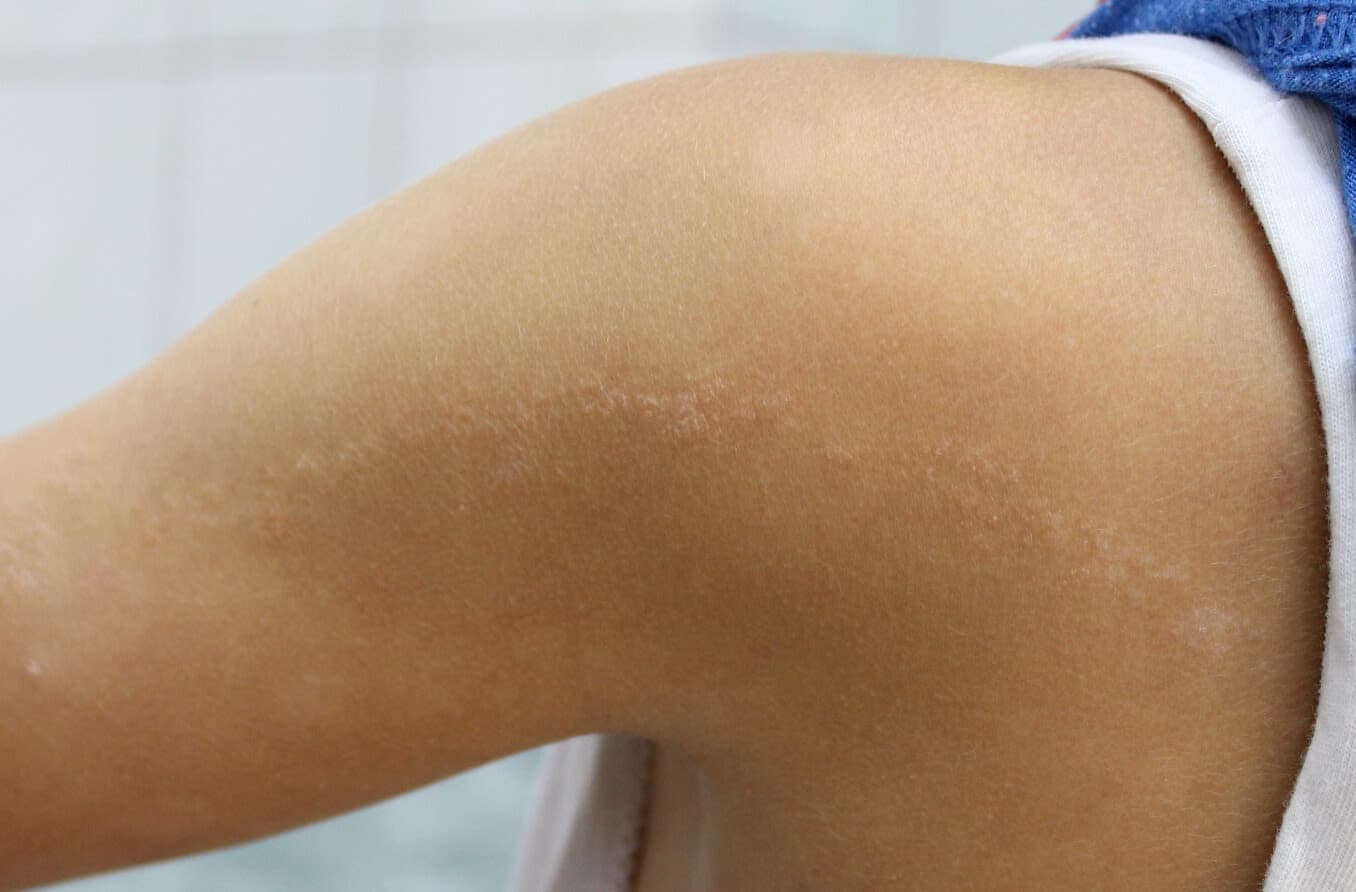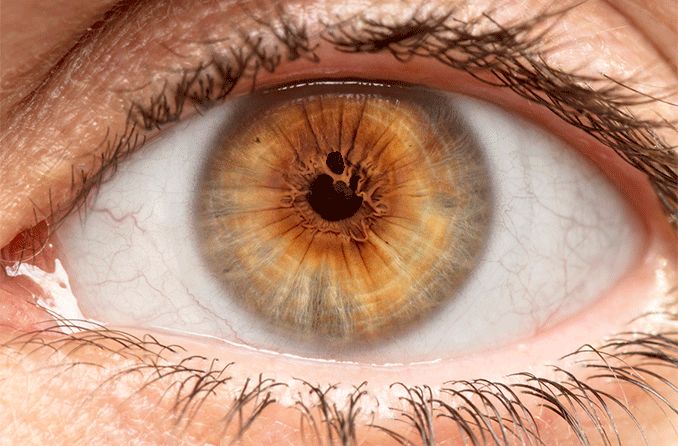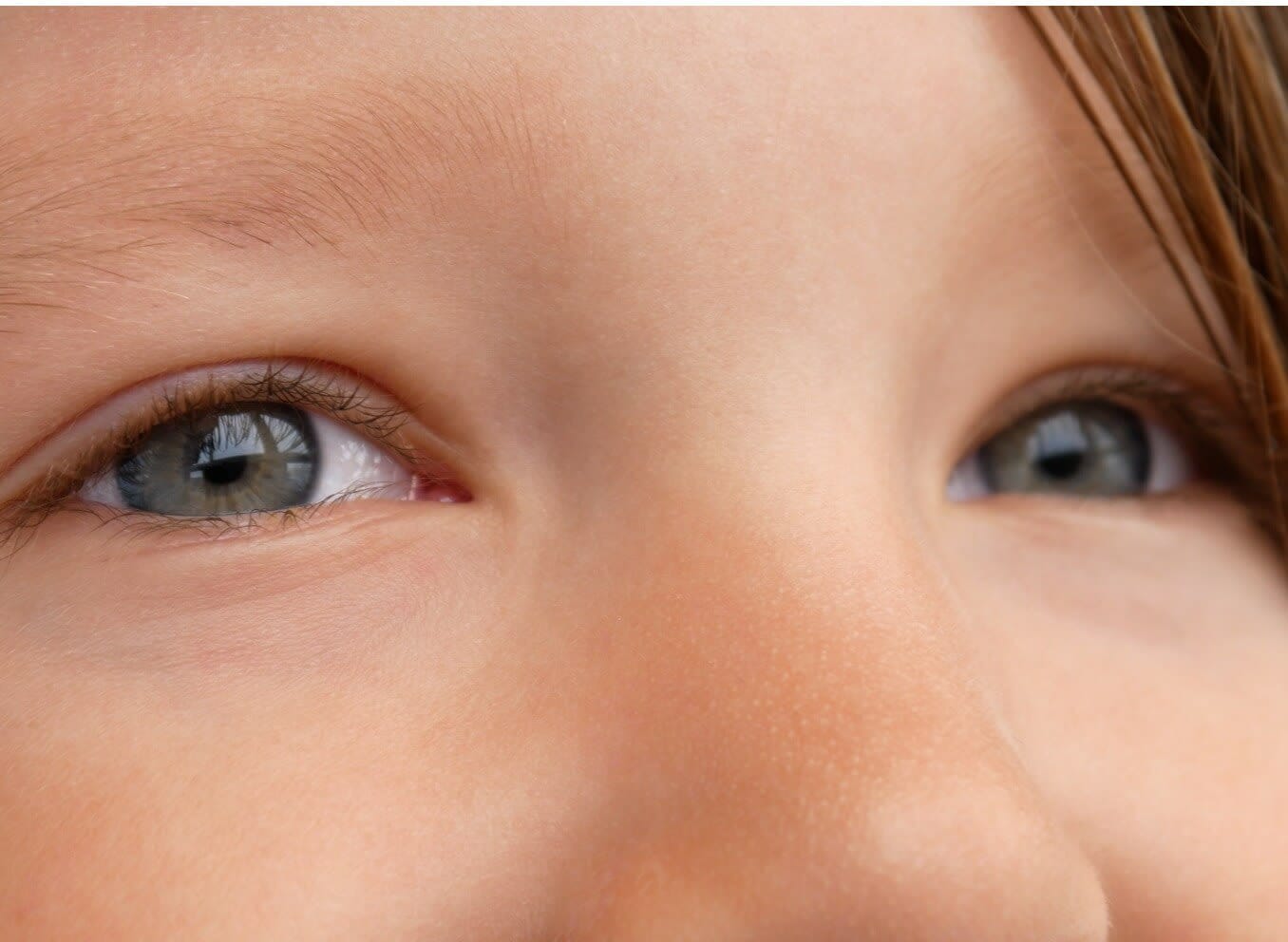What is linear nevus sebaceous syndrome?
Linear nevus sebaceous syndrome (LNSS) is a rare, congenital condition that affects multiple body systems. Most issues appear in the brain, bones, heart and eyes. Many people with LNSS have eye conditions that impact their vision. Epileptic seizures and mental disabilities may also be present.
A hallmark of LNSS is a long, narrow birthmark usually located on the scalp, face or neck. This birthmark (or lesion), referred to as a sebaceous nevus or a nevus sebaceous, is often found in areas that contain many sebaceous glands.
The condition is also sometimes called Schimmelpenning syndrome. This name comes from the psychiatrist who first described the condition in 1957.
LNSS is present in around one in 10,000 live births and does not seem to correlate with a particular sex.
Causes of LNSS
Linear nevus sebaceous syndrome develops before birth. Its symptoms may become noticeable after birth and during childhood. The condition is not hereditary, or passed from parent to child. Instead, it is thought to be the product of a somatic mutation.
A somatic mutation is a genetic change that happens in a cell or cells as a child develops in the womb. These mutations occur randomly and only impact certain cells in a phenomenon called mosaicism.
How LNSS affects vision
Around 60%-80% of those with linear nevus sebaceous syndrome may develop ocular conditions. Some of the eye-related issues that could impact vision include:
Epibulbar choristoma
Epibulbar choristomas are benign tumors found on the eye. They are congenital (present from birth). While the tumors can multiply, their growth is regulated and typically stops after a certain point. The tumors are made up of tissue that ended up in an abnormal location during embryonic development.
Eyelid coloboma
Eyelid coloboma is a congenital condition in which an eyelid’s tissue doesn’t fully develop. Coloboma may affect any of the four eyelids, though it is most commonly found on the upper eyelids. Any amount of tissue may be missing, from a small notch to half of the eyelid.
Strabismus
Strabismus, or misaligned eyes, occurs when the eyes point in different directions from one another. It is often caused by miscommunication between the brain and eye muscles.
Optic nerve hypoplasia
Optic nerve hypoplasia (ONH) is characterized by an underdeveloped optic nerve. The optic nerve is responsible for sending light signals from your eyes to your brain to help process what you see. ONH is congenital and can cause vision loss, abnormal eye movements and other issues.
Cataracts
A cataract describes a cloudiness in the eye’s crystalline lens. The lens, which helps focus light that enters the eye, is behind the pupil. When the lens grows foggy, it can cause issues such as blurred or double vision, light sensitivity or less vibrant color vision.
Retinal defects
The retina is a layer of tissue that lies along the back of the eye. It takes the light that enters the eye and changes it into signals that the optic nerve can send to the brain, where they are interpreted as the images you see. Conditions that impact the retina can cause vision problems, including vision loss.
SEE RELATED: Rare eye diseases: What causes them and how are they treated?
Other symptoms associated with LNSS
Outside of the eyes, linear nevus sebaceous syndrome is associated with issues throughout the body. These can include:
- Seizures
- Mental retardation
- Hemimegalencephaly (a congenital brain malformation, where one half of the brain is abnormally larger than the other)
- Bone deformities
- Heart defects
- Certain cancers
Sebaceous nevus
The sebaceous nevi associated with LNSS are generally present and noticeable at birth. This type of birthmark is actually a benign tumor of the hair follicle. It is typically a smooth, hairless patch of skin with a yellow-orange hue. The area may be raised or the skin may be thicker (plaque-like). For those with LNSS, the birthmark will typically be shaped like a line (making it linear).
Diagnosing linear nevus sebaceous syndrome
Because linear nevus sebaceous syndrome involves multiple body systems, diagnosing the condition may require several tests. If a child is born with a sebaceous nevus and is showing developmental delays, a physician may call for brain imaging. They will also likely look at the patient’s limb length and gait.
An examination of the eyes and skin is important. Other potential assessments may include skin biopsies and tests to check liver and kidney function.
Genetic testing may allow for the early diagnosis of linear nevus sebaceous syndrome.
Management and prognosis
The treatment of linear nevus sebaceous syndrome is based on the individual and the effects of the condition. It often involves multiple health care specialists.
There are several options for treating the nevus sebaceous (birthmark), including:
- Surgery – Surgery may be performed to remove all or part of the lesion. It may be recommended that a patient wait until adolescence to pursue surgery.
- Topical treatments – Topical solutions, such as salicylic acid, retinoids or vitamin D, may be used to help manage the lesion.
- Laser treatment – During this procedure, a beam of light is aimed at the lesion to remove the skin’s outer layers. It can create smoother skin but results may vary.
- Shave dermabrasion or dermaplaning – This approach involves the removal of the skin’s outer layers to help improve the lesion’s appearance.
- Cryotherapy – Cryotherapy uses intense cold energy to destroy dead or abnormal cells in the lesion.
Surgery can also be helpful for treating eyelid colobomas. If performed early enough, it can help maintain the healthy development of the patient’s vision.
If the patient experiences seizures as part of their LNSS, anti-epileptic medications may be prescribed.
Other treatments may vary based on severity and the body systems impacted.
A person’s quality of life and disease prognosis will also depend on the extent and severity of symptoms.
When to see a doctor
If your child is born with a sebaceous nevus and shows signs of developmental delay, seek assistance from your pediatric health care provider. Working with an eye doctor early on is also important, due to the high incidence of ocular issues with LNSS.
READ NEXT: What is a pediatric ophthalmologist?





